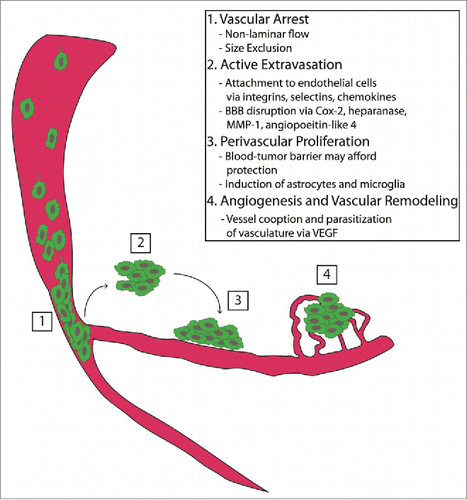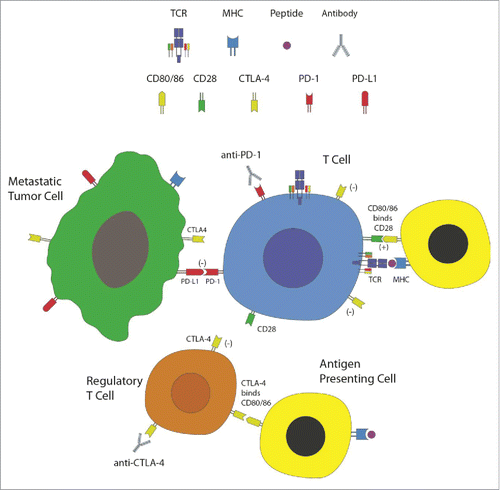Figures & data
Figure 1. Tumor seeding and progression. The critical steps required for successful metastasis formation within the brain include (1) vascular arrest by size exclusion, (2) active extravasation of metastatic tumor cells, (3) stringent perivascular location and proliferation, and (4) sustained growth via angiogenesis and vascular remodeling.

Figure 2. Immune checkpoints and checkpoint blockade. T lymphocytes, the effector cells of the immune system, recognize and are activated against metastatic tumor cells. This process is mediated via presentation of peptide antigens displayed on major histocompatibility complex (MHC) molecules of antigen presenting cells (APCs) to the T-cell receptors (TCRs), as well as binding of co-stimulatory molecules (such as CD28 on T cells binding to CD80 or CD86 on APCs). Immune checkpoints, such as CTLA-4 and PD-1, are induced on T cells following their activation. CTLA-4 is also expressed on regulatory T cells (Tregs). These checkpoints attenuate immune responses carried out by T cells. Tumor cells and Tregs utilize these molecules as a mechanism of immunosuppression within the tumor microenvironment. Immune checkpoint blockade is achieved using monoclonal antibodies directed against these molecules, thus relinquishing these mechanisms of immune inhibition. Evaluation of these therapies in patients with brain metastasis is currently underway.

Table 1. Selected clinical trials of immunotherapy for melanoma, lung, and breast cancer brain metastases.
